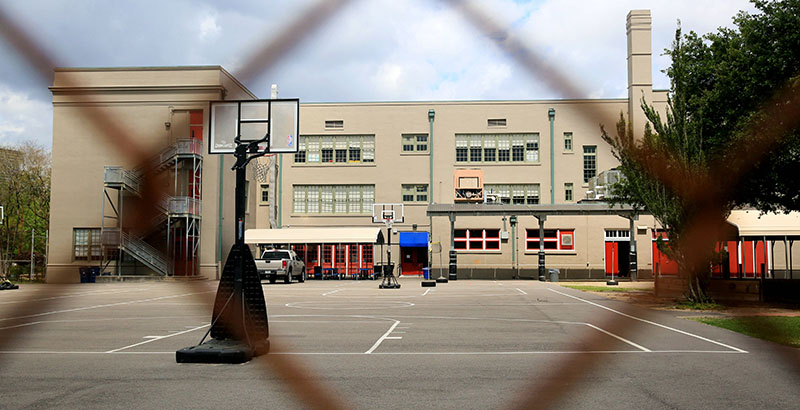Analysis: How Are Schools Shifting Student Support, Instruction and District Operations Amid Coronavirus? 5 Early Findings From New National Survey

A version of this essay originally appeared on the CRPE blog.
On Friday, the Center on Reinventing Public Education released an initial, baseline database of school districts’ plans for supporting students during unprecedented mass closures in response to the COVID-19 pandemic.
More than 100,000 public schools across the country have closed. Many are expected to remain closed for weeks and, in some cases, for the remainder of the 2019-20 school year.
We will track how districts shift instruction, student support and organizational operations in the weeks and months to come.
States, districts and charter school management organizations face hard and quick decisions about how to manage these closures. Our main goal is to provide transparency so decisionmakers can find solutions as quickly as possible.
For our first iteration of this database, we searched for as many districts’ publicly posted plans as we could find via the Council of the Great City Schools, Chiefs for Change and crowdsourced recommendations. From there, we reviewed 46 districts, aiming for a range in size and geography.
Based on our initial review, these lessons have emerged:
Districts are focusing first on basic needs: health, safety, nutrition.
- Almost all districts reviewed had some form of meal delivery plan underway, typically “grab and go” meals available at selected school sites. Policies vary on whether students must be physically present to receive meals or if others can pick up food on their behalf. Denver Public Schools uses community centers to serve dinner to adults and children.
- District communications on multiple platforms emphasize public health and student safety. Some amplify local public health officials’ messaging or stress the importance of handwashing, social distancing and other public health practices.
- Some districts are using public communication platforms to educate families about the virus. In an attempt to explain COVID-19 to students, Montgomery County, Maryland, posted a link to an NPR comic for children.
Districts seem unsure how to address technology and internet access, but some are moving ahead.
- Approximately one-third of districts —14 of 46 we examined — say they are working to deliver technology devices (laptops or tablets) to students. Some are sending surveys to families to identify needs.
- A small number of districts (5 of the 46 reviewed) say they are distributing mobile phones or hotspots to families. More commonly, districts (13 of those reviewed) are encouraging parents to sign up for free or low-cost internet service provided through Comcast or other providers.
- Charlotte-Mecklenberg Schools is planning to provide all students in grades 4 through 12 with Chromebooks. The CMS Foundation created a relief fund and raised $1 million to provide hotspots and internet connectivity to students in the district.
Few districts have comprehensive distance learning plans in place yet.
In the immediate wake of widespread closures, students in different cities are receiving widely different learning experiences.
- Over half of districts reviewed (26 of 46) are sharing links only to optional assignments or learning activities on publicly available websites, such as Khan Academy. Some of these same districts committed to providing more robust curricula at a future date. Districts such as the L.A. Unified School District and Fairfax County Public Schools are giving access to livestreamed curated educational programs on their websites.
- Districts that do provide formal curricula have a range of approaches. They might send paper-based worksheets and packets home. For example, Kansas City and Cincinnati rely on a paper-based curriculum to avoid technology access challenges. Miami-Dade County Public Schools asks teachers to assign students specific online lessons, as does Henry County Public Schools in Georgia. Guilford County Schools in North Carolina asks teachers to record and upload video lessons over apps like Canvas.
- None of the districts we reviewed say they are attempting “synchronous” learning, in which students engage in live discussions with teachers and classmates. However, a small number of those reviewed appear to be engaging in “asynchronous” or “hybrid” remote learning, in which students view daily instructional videos from their teachers or receive daily assignments and feedback.
- Many districts have plans to roll out more formal remote learning strategies in the coming weeks.
Resources provided for families of special populations are rare or emergent.
- Most districts have provided little to no publicly available guidance for special populations, such as students with special needs, dual-language learners and/or advanced learners. To date, 11 of the 46 districts say they are providing curricular resources specifically designed for students with disabilities.
- That said, districts that have already delivered curricula earlier this week are now adding special population resources.
- Boulder Valley Public Schools, for example, will provide full online instruction and Individualized Education Program services for all students by video or phone. Fresno Unified has provided daily lesson plans by grade, with links to online lessons and resources, for students with special needs.
A daunting list of operational and financial issues remains to be tackled.
Over the past week, state and local officials have extended the duration of planned closures, and at least one state has announced that schools will remain closed through the end of the academic year.
As schools prepare for remote learning over the long haul, solving for universal connectivity and technology access remains a fundamental challenge. No district in this review presents a clear solution for ensuring that 100 percent of students have a technology device and reliable, long-term access to the internet. This is a complicated, and potentially costly, operational challenge that must be addressed if school closures extend into the summer or the next academic year.
Over the coming weeks, how districts deliver remote instruction, prepare teachers and parents to deliver quality learning experiences, and monitor students’ progress will be essential to understand.
Districts are grappling with a wide range of known and unknown variables as they plan for the end of the 2019-20 school year and prepare for 2020-21. Spring is typically when districts set annual budgets, master schedules and staffing assignments. It’s also when they sign vendor contracts and start hiring. How they address these and countless other decisions poses another monumental task for school and district leadership in the weeks to come.
We will continue updating our database with information from charter management organizations and more districts, and we will add more categories of information. We will also continue to update and inform you on the evolving lessons we learn, questions emerging and opportunities arising as we all grapple with the possibility that our educational landscape could be radically redefined for the foreseeable future. Stay tuned.
Robin Lake is director of the Center on Reinventing Public Education at the University of Washington Bothell. You can find her on Twitter @RbnLake.
Get stories like these delivered straight to your inbox. Sign up for The 74 Newsletter

;)
